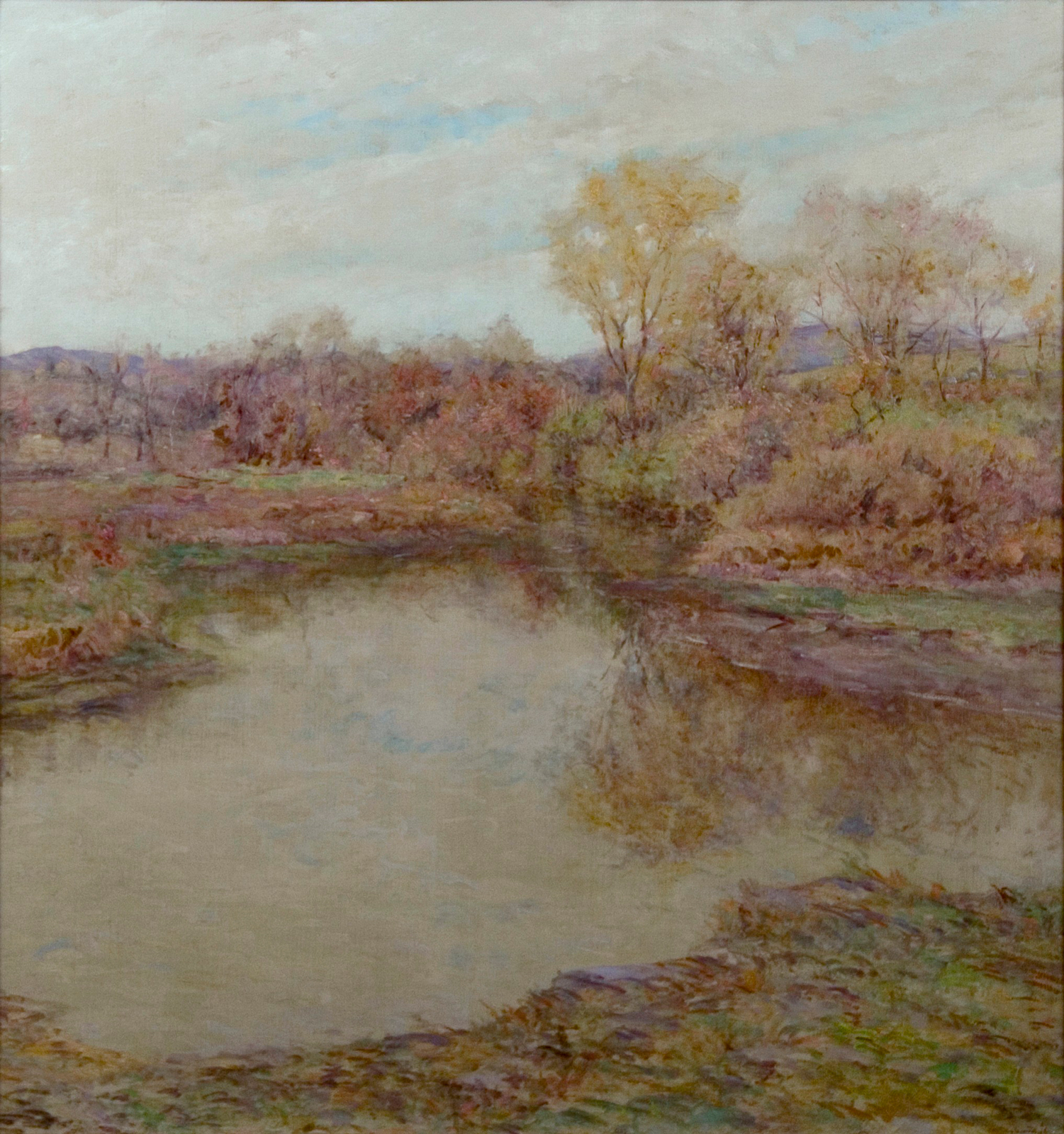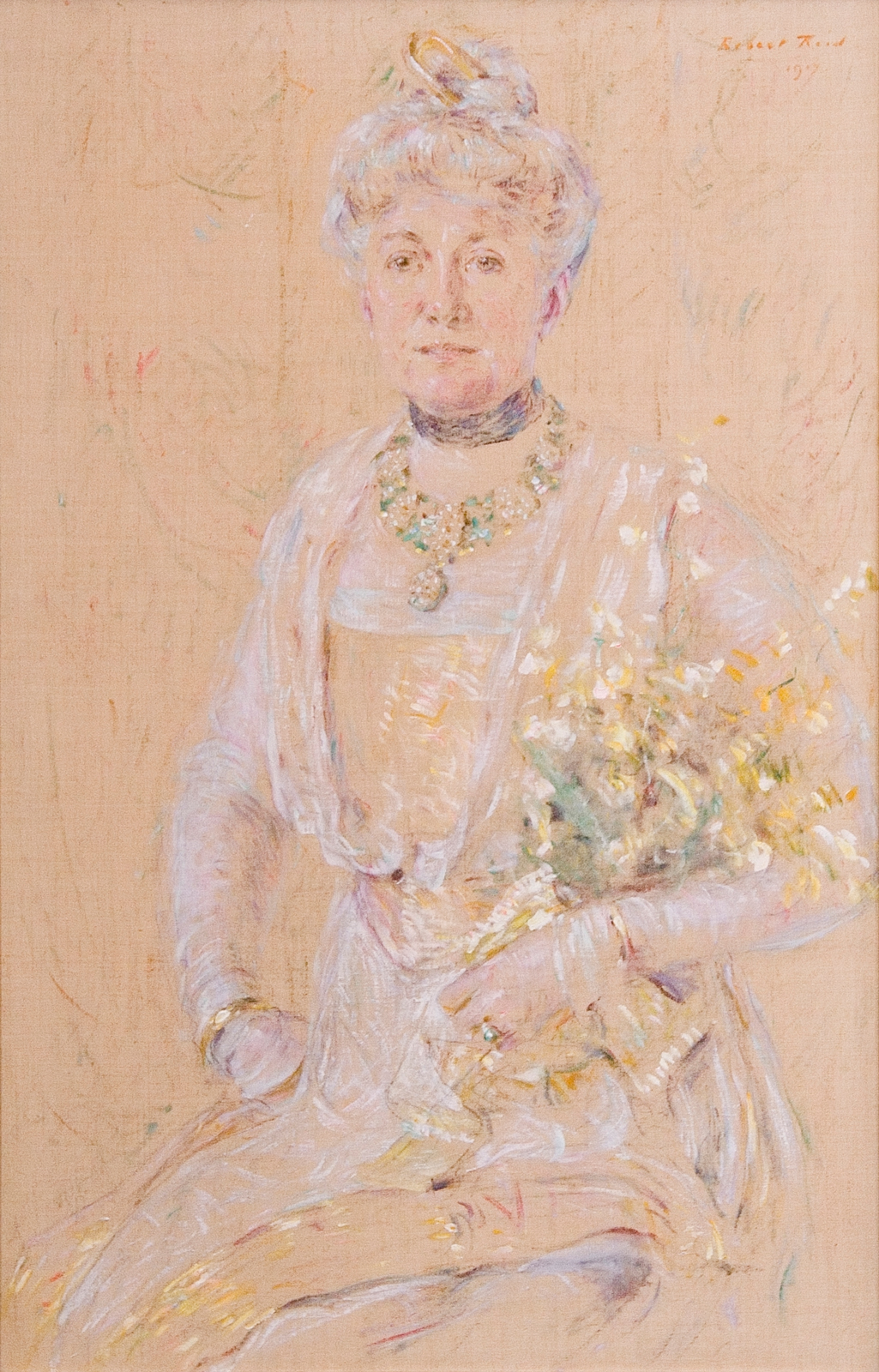Robert Reid
Robert Reid (1862-1929) was an American Impressionist and one of the original members of The Ten, known especially for his bright, low-contrast portraits of women among gardens and flowers.
Reid was born in Stockbridge, Massachusetts. In the early 1880s he studied at the Phillips Academy, the Boston Museum School, and, briefly, at the Art Students League in New York, before leaving in 1884 for the Académie Julian in Paris. Reid returned to New York in 1889, receiving his first major commission a few years later to decorate one of the entrance pavilions at the 1893 World’s Columbian Exposition in Chicago. Several high-profile mural commissions followed, including the 1900 Paris Exposition, the Fifth Avenue and Imperial Hotels in New York, the Boston State House, and the Library of Congress.
In 1897, Reid was brought into the group known as The Ten, which consisted mostly of French-trained American artists (including John Henry Twachtman and, later on, William Merritt Chase) who withdrew from the prominent Society of American Artists and began exhibiting together in 1898. Reid was one of the group’s youngest members, and his comparatively bright palettes set him apart from the others.
Around 1920 Reid joined the faculty of Broadmoor Academy in Colorado Springs, working to develop their art program over the course of the 1920s. His work outside of teaching throughout this time was mostly on portrait commissions. Reid had a stroke in 1927 that left him partially paralyzed. He spent the final two years of his life in a sanatorium in upstate New York, re-learning how to paint with his left hand.

